Adriacom I Business Services & Immigration
Montenegro Awaits - Let's Make it Yours.
Table of Contents
ToggleExploring the Old Town of Bar
Towering above verdant, lush landscapes on a rocky outcrop, Bar’s town silhouette still excites the imagination of looker-ons and passers-by. Stari Bar, as this picturesque destination is known in the local dialect, was probably first settled by the Byzantines, though tombs and artifacts dating to earlier centuries indicate an older incarnation.
Stari Bar owes its present urban plan and fortification layout to the High Middle Ages; in the following centuries towers, palazzi, bathhouses, churches, and other buildings were added subsequently by the Serbs, Venetians, and Ottomans. The town’s wealth heavily fluctuated following that of the wider region.
Bar was caught up amid the Venetian-Ottoman power struggles in the Mediterranean and, by the twentieth century, saw a wave of emigration of sons leaving for northern Serbia and the New World. It was a force majeure, however, that proved to be Stari Bar’s final undoing. Following the devastating earthquake of 1979, the settlement was completely cut off from the water supply and became uninhabitable.
In 1979, all its inhabitants were moved to the new neighborhoods along the embarkment. Today, guided and self-guided tours allow visitors to explore ‘Montenegro’s Pompeii’, the country’s largest open-air museum boasting more than 250 structures, some of which are remarkably well-preserved.
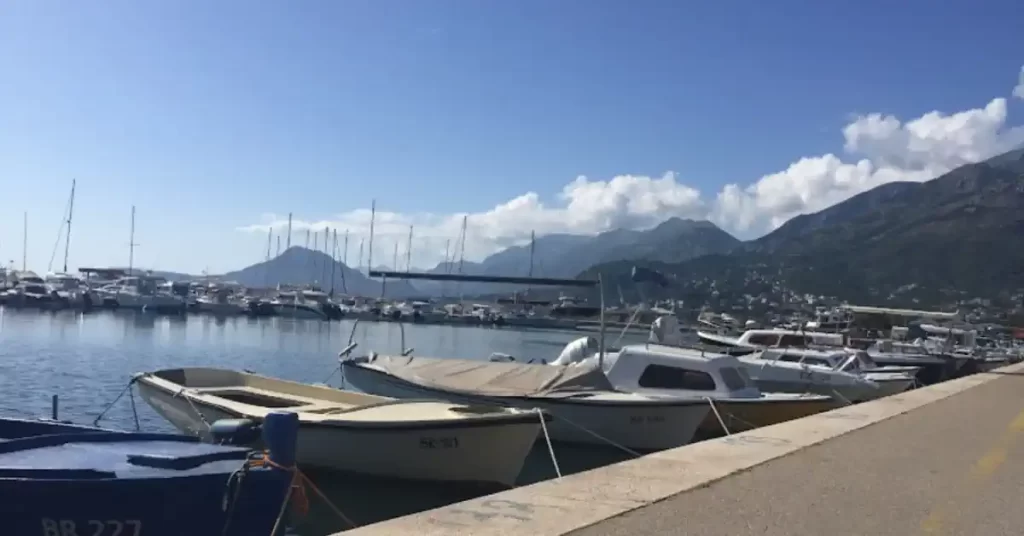
Bar, Montenegro
Bar is a popular, family-friendly seaside resort town between Lake Skadar and the Adriatic Sea. A beautiful, clean beach, and promenade with restaurants and cafes.
Major Attractions
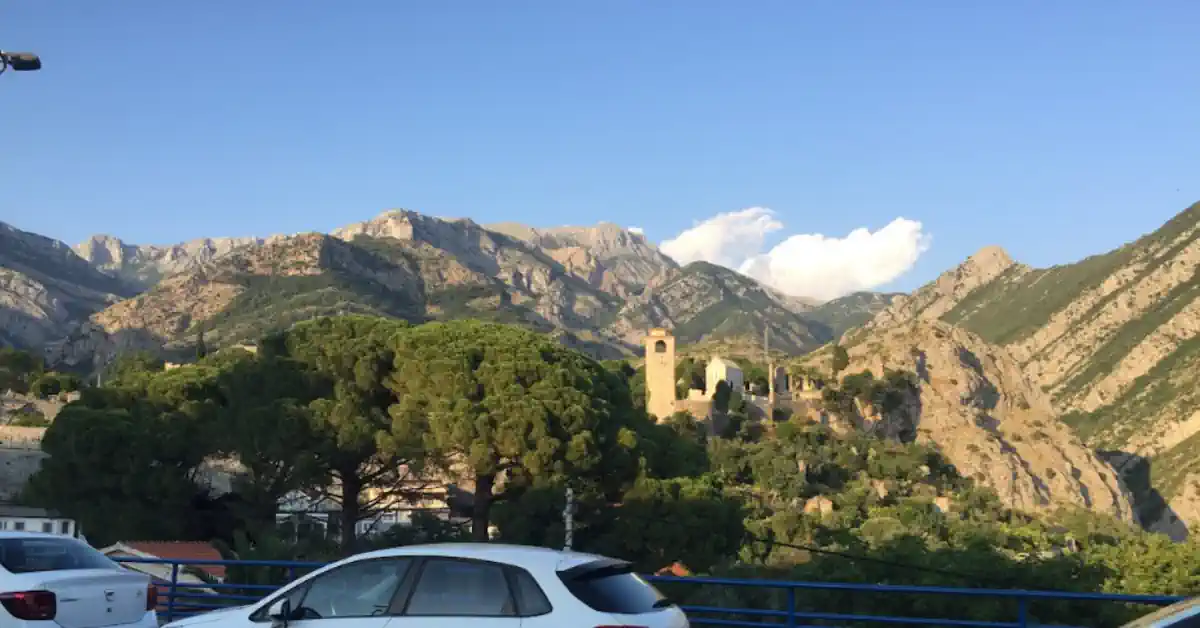
From afar, Stari Bar resembles a rural Tuscan hilltop town, complete with a beautiful clock tower made of grey stone blocks. Up close, the town is encircled by giant city walls originating in the 9th century. You can enter the once well-guarded fortress through one city gate, which pierces a small entrance into the thick city walls. A relief of the Lion of Venice finds itself above the gate.
Spectacularly perched atop a steep cliff, and naturally protected from three sides, ‘Antivari’ as the town was known under the Venetians, lets you relive the turbulent history through its architectural heritage. Here are the most important landmarks besides the clock tower and the ancient city walls:
- The Churches of Stari Bar: the walled city boasted no less than ten churches, of which only a few are still preserved, including the Church of St. Veneranda (14th century), the tiny Church of St. John the Baptist, and St. Catherine’s Church (15th century), while the remains of other former sanctuaries lie scattered throughout the old town’s urban fabric
- The Bishop’s Palace: an obvious and obligatory stop when visiting the old town. The former residence for the town’s archbishops has been turned into an archeological museum, showcasing pottery work, ceramics, and other artifacts found in the area around Bar
- The Custom’s House: one of the few well-preserved examples of Renaissance architecture in Montenegro. It was built in the 15th century, during the Venetian period, and was also used as a residential building in the following centuries
- Bar’s Ottoman Heritage: during their 300-year-long rule, the Ottomans left visible marks on Bar, most notably in the form of the Turkish powder mill, that today houses a small lapidarium, and a Hammam, a typical Turkish bathhouse
- The Aqueduct: considered to be a feat of engineering in its time (constructed during the 16th and 17th centuries), it has seventeen stone arches that enabled the transport of fresh water from the mountains into the town, over a distance of 3 kilometers
Visiting the old town of Bar is like reliving its glorious past, and is always recommended, especially during the warmer summer months when several open-air events, including concerts, literary evenings, and theater performances, breathe new life into the charming but abandoned streets of this museum town.
Stari Bar History
Thanks to its geographical location on the borderline of Western Civilization, Antivari/Tivar (its Venetian/Ottoman names) was an object of interest to the tides of the invaders borne on the Adriatic. Stari Bar’s history begins with Byzantine sailors stepping ashore in the glory days of the Eastern Roman Empire – and ends a thousand years later when the last suitcases were zipped up in the aftermath of the earthquake.
Though the year 1042 is often given as the founding of Bar, archaeological evidence suggests that the town developed from the gradual union of several Illyrian settlements during the late Iron Age. Greek and Roman pottery discoveries in and around Bar indicate the presence of these ancient civilizations in the surrounding valleys.
Some historians believe that Bar was mentioned by the Byzantine scholar and historian Procopius of Caesarea for the first time in the 6th century, while others see the first evidence of Bar’s existence in an 8th-century document by Byzantine Emperor Leo III the Isaurian, but all of them agree that Antibareos (Greek name for Bar, possibly meaning on the other side of Bari, Italy) was finally mentioned in a book by Eastern Roman Emperor Constantine VII in the 10th century.
The ensuing century saw Bar changing hands several times between the medieval Serbian Kingdoms and Byzantium. As evidenced by dozens of buildings inside the walled city and work done on the fortifications, the Venetians ruled over Bar for the majority of the 15th and 16th centuries, until 1571, when the Ottoman Turks started their 307-year-long occupation.
Bar was finally liberated in 1878 when then-Prince Nicholas I (he later became the first and only King of Montenegro) led his army to a stunning victory over the Turks. This event was commemorated with the construction of a monument that finds itself between the main old town parking lot and Konoba Akvadukt.
Olive oil production has been of great economic importance to Bar for centuries, and according to historical records, the town’s inhabitants (74 families were living there in 1512) commanded over 100,000 olive trees and dozens of mills, extracting 300,000 liters of extra virgin olive oil per year on average.
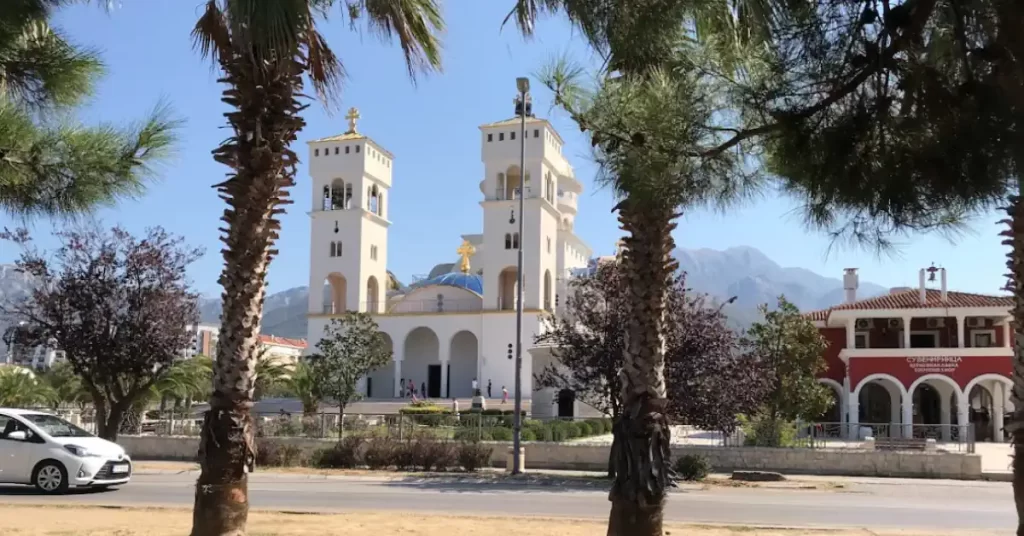
Things to do in Bar
Our guide explores the best things to do in Bar and the surrounding area, from family-friendly beach activities to outdoor adventures and culinary experiences.
Things to see and do nearby
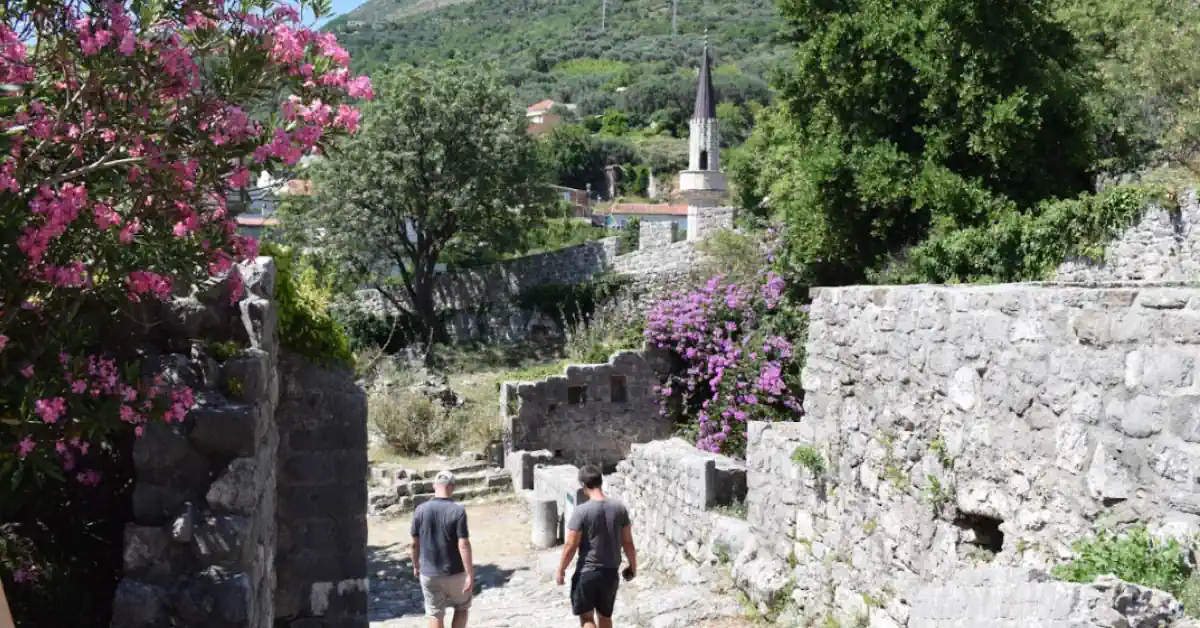
Don’t miss Stari Bar’s famous Friday open-air farmers market, where you can connect with the hard-working local producers, offering everything from pomegranates, figs, oranges, cheeses, and herbs. The street that leads from the market to the fortress’ entrance is plastered with cute artisan shops dedicated to authentic souvenirs, products made of olive oil, handbags, and jewelry.
One of the world’s oldest olive trees is situated right here in Bar. A kilometer or so to the south of the old town, towards the sea, the 2,240-year-old tree is one of Bar’s most important landmarks. The area also has a lot to offer for those interested in sports and outdoor activities: Stari Bar is the perfect starting point for a hike to the Vrteljak Waterfall, located in the village of Turcini.
Canyoning is popular, too, and one of Montenegro’s most stunning gorges, the Medjurec Canyon, is just around the corner. All sorts of watersports can of course be practised in the Adriatic, which is just a 5-minute drive away from the old town. If you want to sample smoked eel and carp or take a scenic boat trip, Lake Skadar is every nature enthusiast’s and birdwatcher’s paradise.
Practitioners of the Muslim faith or anyone else interested in religious monuments can visit one of the old town mosques. The Omerbasha Mosque lies just a couple of steps away from the Main Gate and dates back to the 17th century. Adjacent to it, you’ll find Dervish-Hasan ‘s mausoleum.
There’s also the Skanjevica Mosque which is named after a rich nobleman from Bar – Ahmed-Beg Skanjevic. The mosque with its unique 22-meter-high stone minaret was built in 1819 and completely reconstructed in 2009. Next to the mosque, visitors can admire a Sufi shrine of the Naqshbendi order.
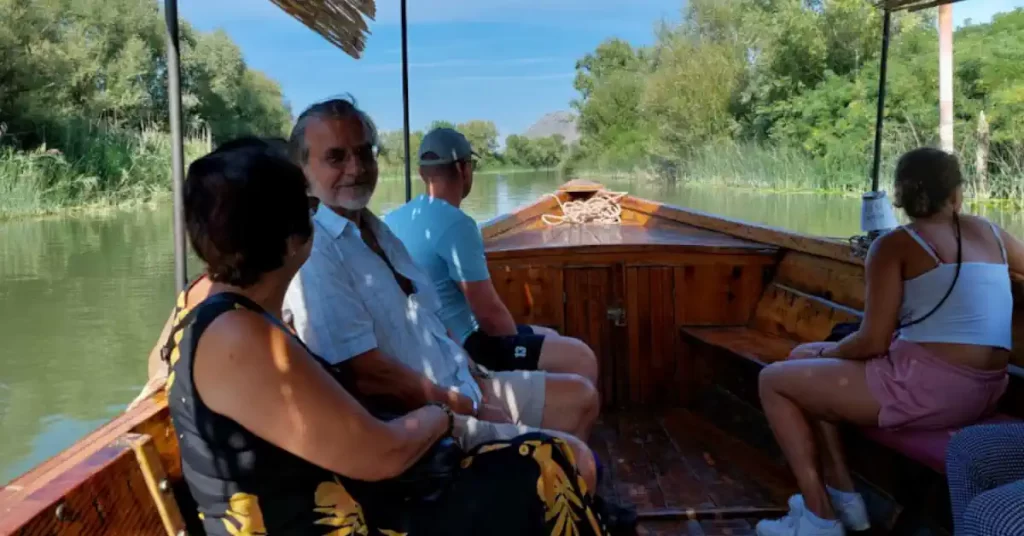
Lake Skadar
Find out what makes the Skadar Lake National Park so special with our guide to the most popular activities, its regional cuisine, and accommodation options.
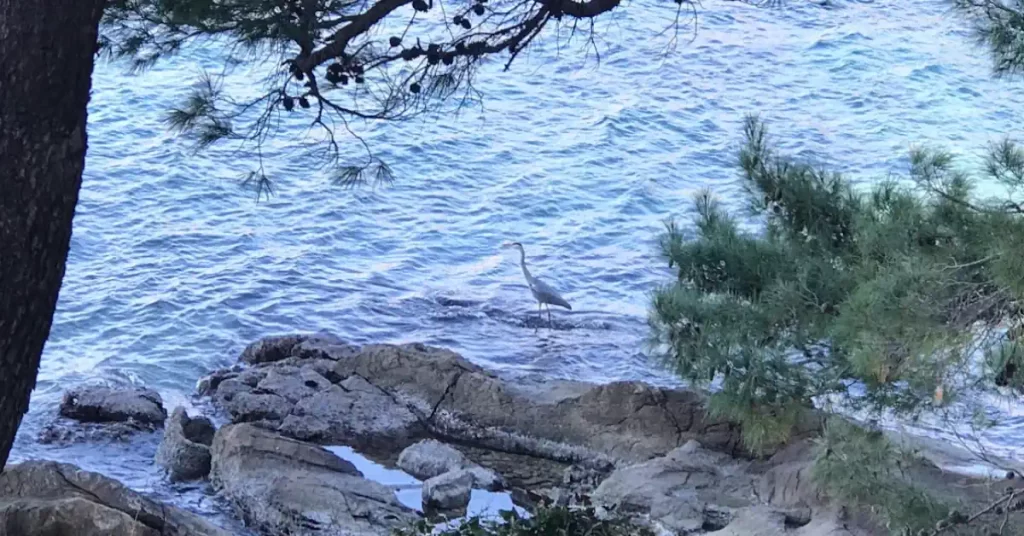
Birdwatching in Montenegro
The Skadar Lake National Park is the perfect place to go birdwatching in Montenegro. The Dalmatian Pelican is the biggest attraction but there are hundreds of other species.
Best Hotels close to the Old Town
Offering panoramic views of the old town, the 5-star Stara Carsija Hotel & Spa is by far the most stylish and luxurious stay within footwalk distance of the city walls. This lovingly designed hotel looks as if it has been standing there forever, but it is actually a new development full of character, built of stone and wood in a traditional Mediterranean style.
It features both an outdoor swimming pool and a wellness oasis with a Turkish bath and a Finnish sauna, as well as various terraces, intimate nooks, and beautiful courtyards for unwinding. The interior is elegant and welcoming with warm, natural tones, exposed sandstone walls, and wooden beams, and each of the 32 rooms and suites is well-appointed, with beautiful furniture and modern fixtures.
The charming eleven-bedroom Kula Boutique Hotel sits just a few steps away from the city gate. A true labor of love, that took years of renovations and improvements to turn it from a simple guest house into the talk of town it is today. Boasting cozy rooms, an exceptional restaurant, and great service, you won’t find a more centrally-located hotel.
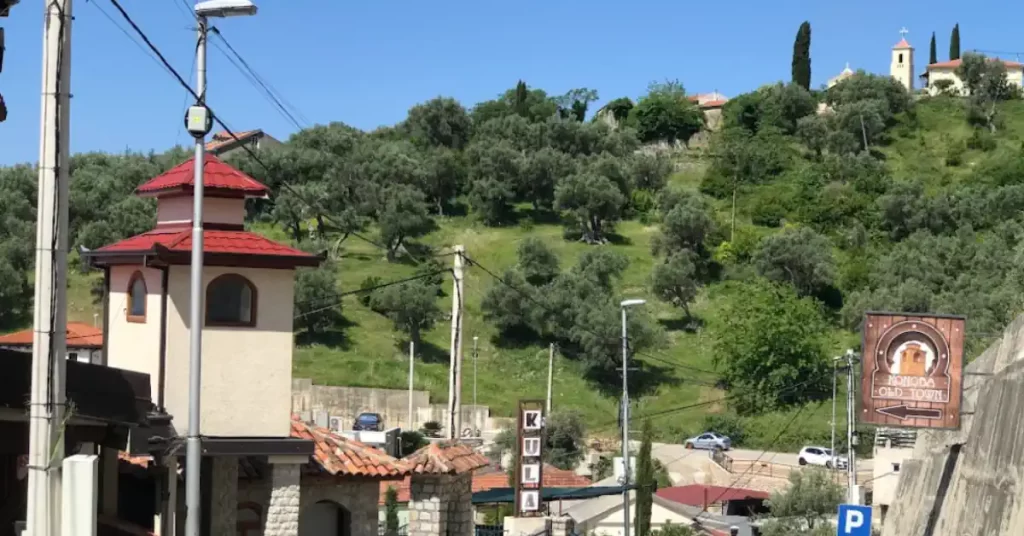
Best Hotels in Bar
The family-friendly beachfront and the centuries-old historic center have made it a major tourist hub. Discover the best hotels in Bar, Montenegro.
Restaurants close to the Old Town

While you won’t find any eateries in the heart of the old town, you can still satisfy your food cravings in one of the restaurants lining the cobblestone streets outside the city walls. For an authentic taste of the Balkans, visit either Konoba Kaldrma, Bedem, or Stara Carsija which offer a fantastic blend of flavors typical for the region.
Dine outside on their al-fresco terraces in the romantic atmosphere of the pretty old town. For something a bit different, with Oriental spices and ingredients from faraway lands, the Sons Eatery, right on Starobarska Carsija Street, serves a delicious kebab menu, fused with exciting South Italian notes – their pizzas are world-class.
Retreat to Restaurant Akvadukt’s restful courtyard for a taste of what is arguably the best Dolma in Bar. Simple yet succulent and mouth-watering, this typical Ottoman dish is prepared slightly differently than on the Anatolian peninsula and consists of beef-stuffed eggplants, zucchinis, vine leaves, or peppers, served with homemade bread, olive oil, and shopska salad.

Tasty Dining Options
Some of the best restaurants in Bar line cobblestone streets alongside the ancient city walls. They serve local specialties such as grilled octopus or lamb in yogurt.
Opening Hours: 08:00 – 18:00
The entrance fee is 5€ for adults and 1€ for children. Credit Cards may or may not be accepted.
Area maps are available at the entrance.
Parking 0,80€/hour in the adjacent parking lot. Be aware of street parking scammers.